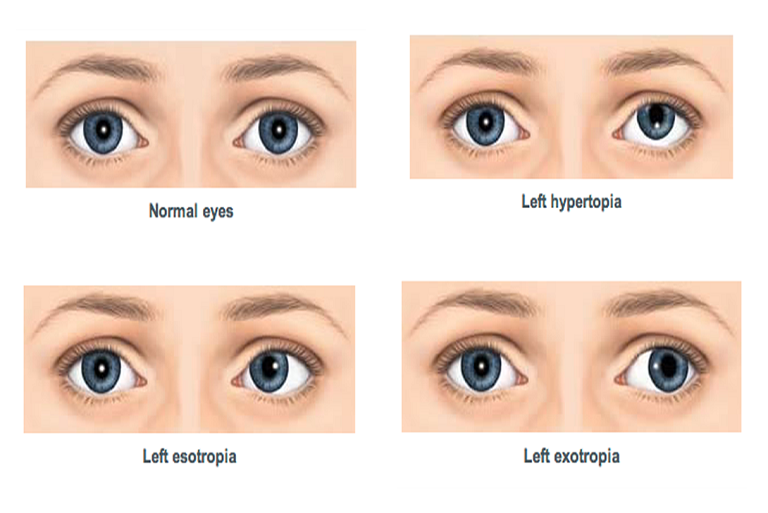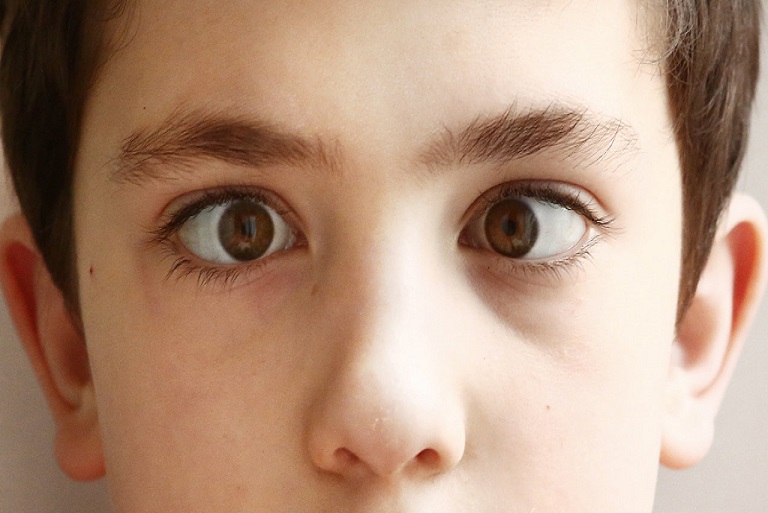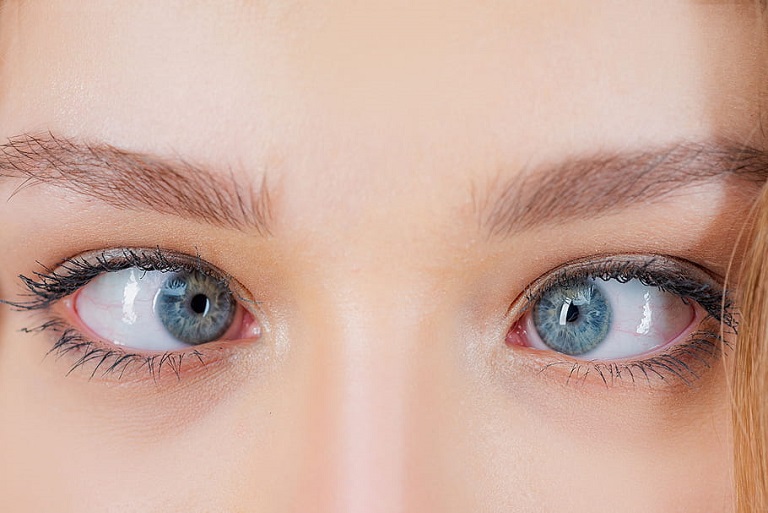Squint correction surgery
What’s Strabismus?
Strabismus (Squint) is a condition in which the eyes do not line up with each other. In other words, one eye is turned in one direction that is different from the other eye. Under normal circumstances, the six muscles controlling eye movement work together and point both eyes in the same direction.
Strabismus Types :
- onward turning (esotropia)
- Outward turning (exotropia)
- Upward turning (hypertropia)
- Downward turning (hypotropia)

Causes of Squint :
Squint eye is caused due to nerve injury or problems in the eye muscles. When certain muscles around the eye are weaker than others, they are unable to work in coordination
. As a result, one eye looks away from the
object, while the other eye turns in a different direction to look into the object
. The brain receives two different signals, one from each eye, and the signal from the weaker eye is ignored. While a squint eye is usually present at birth, it can even develop later in life due to general health conditions or eye injuries.
Strabismus Treatment :
Strabismus treatment without surgery
Glasses:
Wearing glasses can sometimes correct mild strabismus.
Temporary eye patch over the stronger eye:
if your child has amblyopia. This can make the weak eye stronger, which may help align the eyes.
Surgery
Surgery on the eye muscles.
Squint surgery
Before, during and after squint surgery:
Before squint surgery :
- You should take part in a preoperative evaluation – a few simple tests will be done to see if you can perform the operation and you will have the opportunity to ask any questions about it.
- You can usually go home on the same day, ideally with a friend or family member (because you may be drowsy). You are not allowed to drive at least one or two days after surgery.

What Happens During Squint Surgery :
the eye is held open using a tool called a lid speculum – sometimes it may be necessary to operate on both eyes to accomplish better alignment
the surgeon detaches part of the muscle attached to the eye and moves it into a new position so that the eyes point in the same direction.
The muscles are fixed in their new position with dissolvable stitches – these are hidden behind the eye so you will not be able to see them afterwards.
After squint Surgery :
- eye pain: this tends to end at least a few days and often feels like grit or sand in the eye; taking simple painkillers such as paracetamol may help.
- red eyes: this can remain
- for a couple of months; you may also notice
- blood in your tears for one day or two.
- itchy eyes: this is caused by the stitches and it may last a few weeks till they dissolve; try not to rub your eyes.
- double vision: this usually passes after a week or so, but can last long.
You can also find the information you need about the do's and don'ts during the recovery period in the table below :
| Recommended & Allowed | Not Recommended For a Week | Not Recommended For two or four Week | Forbidden |
| Reading and watching tv | exercise and sport | swimming | Blow to the eye |
| Normal diet | entry of any soap or shampoo in the eyes | contact sports (such as rugby) | Rubbing the eyes |
| Wearing glasses | work or school | make-up close to eyes | |
| driving | Children should not play in sand or use face paint |
Risks of squint surgery :
The operated eye may develop an infection, rarely, however. It could be managed using eye drops as prescribed by the doctors. If any such problem occurs, the patient must report it immediately to the doctor.
Squint surgery age limit :
There is no specific age for Squint eye surgery in adults.
Cost of Squint surgery in Iran is 780 $ to 1200 $.
Smart Behan is the main platform to provide medical information to address your health issue. Our network introduces centers offering high quality services and expert physician as well as booking appointment. You can manage your medical travel. Smart Behan accompanies you from airport to airport handling Welcoming, transportation, translation, medical treatment and last not the least follow up when you are back to home.
To view the rest of our training posts, you can click here

